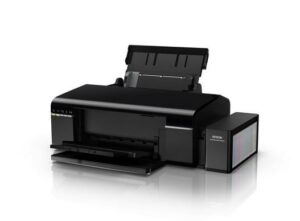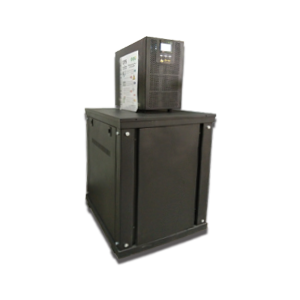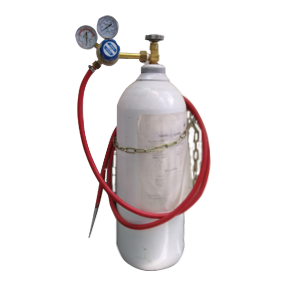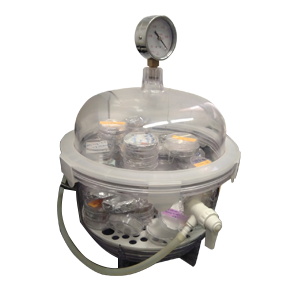Inkjet Printer

We use a L805 Inkjet printer manufactured by Epson company.
Below you can reach some useful information and instructions about the device.

We use a L805 Inkjet printer manufactured by Epson company.
Below you can reach some useful information and instructions about the device.

Uninterupted Power Supply (UPS), used in case of power shortages specially during summer. Some devices like Electrochemical work station are plugged to UPS system therefore they can be used without fear of blackouts.
Below you can reach some useful information and instructions about the device.

PH meter device can be used to determine the amount of acidity or alkalinity of a solution. Our device can also measure the temperature of the solution.
Below you can reach some useful information and instructions about the device.

Nitrogen gas can be purged into the solutions to remove excessive oxygen or other unwanted gases.
Below you can reach some useful information and instructions about the device.

Vacuum pumps can be used to create vacuum inside a chamber. Pumps are needed for filteration process for separating nano-materials from solvents and dispersions, or to create vacuum inside the desiccator.

Desiccator is used for storing prepared samples which are vulnerable to oxidation. Also samples can be put inside the desiccator to dry. Our desiccator can maintain the inside vacuum for months.
Below you can reach some useful information and instructions about the device.
Today, the demand for energy production and storage devices as well as affordable, efficient, and low-cost healthcare and environmental monitoring systems is increasing in worldwide. Therefore, there is an urgent need for new technologies to overcome these energy and health-related issues. In this context, nanoscience and nanotechnology open new gates and as a result, understanding reactions and processes at the atomic scale are essential to optimize the performance of the final devices based on nanostructures.
We are pleased to announce the 1st Online International School on “Fine-scale Processes in Health and Energy Applications” is going to be held on 19-21 June 2021 (29-31 Khordad 1400) at Sharif University of Technology. Participating in this program is free of charge, but registration is required. For those participants who need certification, a notification will be sent after the program. All sections are virtual and available via online platforms.
For more details and access to the recorded sessions, please see here.
Qualified PhD and master students are welcome to do their research in these open topics. Even senior bachelor students who are interested in lab work can also participate in some experimental aspects. For any required information, please contact naseri@sharif.edu.
PROJECT#1
TITLE: Two-Dimensional (2D) Metal Oxides for Energy Storage & Conversion Applications
The ever-increasing demand for clean and sustainable energy in our modern society has necessitated the search for functional nanomaterials with superior performance. In this regard, Two-dimensional (2D) transition metal oxides have attracted a great deal of attention due to their outstanding physico/chemical properties. Inspired by the pioneering works in this novel field, we would like to investigate the performance of these 2D nanostructures in energy-related applications.
Selected References:
Browne, M. P.; Sofer, Z.; Pumera, M. Layered and Two Dimensional Metal Oxides for Electrochemical Energy Conversion. Energy Environ. Sci. 2019, 12, 41–58.
Sun, Z.; Liao, T.; Dou, Y.; Hwang, S. M.; Park, M.-S.; Jiang, L.; Kim, J. H.; Dou, S. X. Generalized Self-Assembly of Scalable Two-Dimensional Transition Metal Oxide Nanosheets. 2014, 5, 3813.
Zhang, J.; Lin, X.; Xue, D.; Xu, B.; Long, D.; Xue, F.; Duan, X.; Ye, W.; Wang, M.; Li, Q. A Generalized Strategy for the Synthesis of Two-Dimensional Metal Oxide Nanosheets Based on a Thermoregulated Phase Transition. Nanoscale 2019, 11, 3200–3207.
PROJECT#2
TITLE: 3D Printing of Functional Nanostructures Based on Additive-Free Inks
The ability to formulate functional inks of nanomaterials with desired rheological features is considered as a crucial step toward the realization of various Nano-based technologies. Unfortunately, in developing the functional inks, additives and binders are used to manipulate the rheological properties which consequently hinders the full utilization of active nanomaterials. As a result, currently, the search for additive-free inks is relentlessly pursuing. In this regard, we would like to design and develop novel inks for the on-demand applications.
Selected References:
Bonaccorso, F.; Bartolotta, A.; Coleman, J. N.; Backes, C. 2D-Crystal-Based Functional Inks. Adv. Mater. 2016, 28, 6136–6166.
Zhang, C. (John); McKeon, L.; Kremer, M. P.; Park, S.-H.; Ronan, O.; Seral‐Ascaso, A.; Barwich, S.; Coileáin, C. Ó.; McEvoy, N.; Nerl, H. C.; et al. Additive-Free MXene Inks and Direct Printing of Micro-Supercapacitors. Nat. Commun. 2019, 10, 1795.
Quain, E.; Mathis, T. S.; Kurra, N.; Maleski, K.; Van Aken, K. L.; Alhabeb, M.; Alshareef, H. N.; Gogotsi, Y. Direct Writing of Additive-Free MXene-in-Water Ink for Electronics and Energy Storage. Adv. Mater. Technol. 2019, 4, 1800256.
